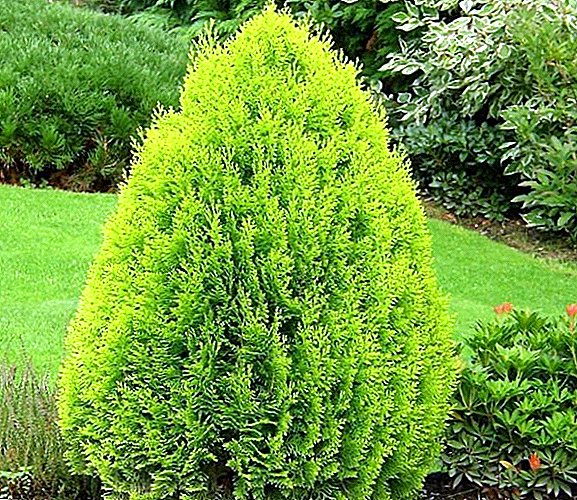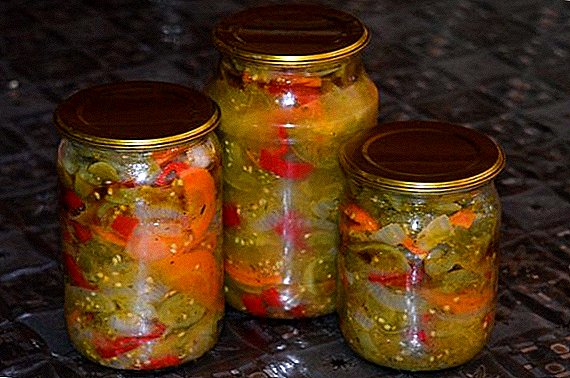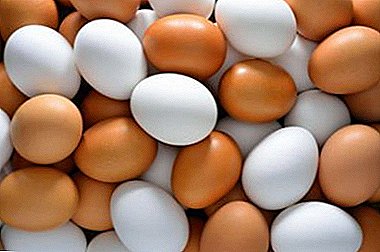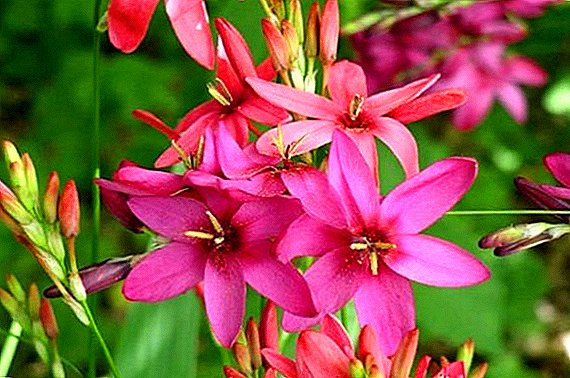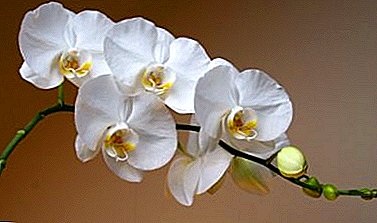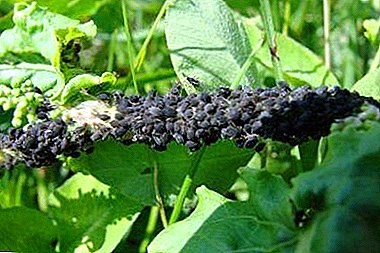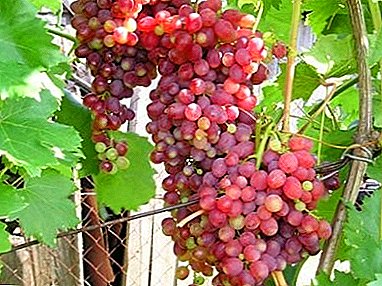
Radish kishmish - a wonderful grape variety.
Its fruits are quite large, pleasant sweet taste with notes of nutmeg and the almost complete absence of seeds.
The variety has a high yield, resistance to cold and early ripening.
What kind is it?
Table grade pink with a slight red or golden hue.
Among the pink grapes I would like to mention such varieties as Angelica, Gurzuf Pink and Pink Flamingo.
Kishmish Radiant grapes: description of the variety
The vines can be medium tall and tall, characterized by strong branching. Are fruitful from 50 to 75% all shoots, each is located 1-2 clusters of berries.
The leaves are medium-cut, resemble a heart in shape, the color is light green or grassy, the petiole is long.
Heavy bunches (600-1000 g), large size, cylindrical shape with a cone in the form of a cone at the bottom. Density is medium or low.
Heavy clusters also demonstrate Transformation, Nadezhda Aksayskaya and Muromets.
Oval-shaped berries, elongated, on average 20-22 mm with length and 16-18 wide. Weight of each up to 4 g. Dense pulp has a harmonious taste with notes of nutmeg.
Acidity 6.5 - 7.5 g on l, sugar content - 18-22 %. Among the seedless varieties is considered the largest and most delicious, during tastings, its assessment reaches 9.8 points out of 10 possible.
Seedless as Seedless, Witch Fingers and Russian Corinka also differ by seedlessness.
A photo
Photo grapes "Kishmish Radiant":


Breeding history and breeding region
Radiant kishmish - hybrid variety obtained from crossing Pink somber and the Cardinal.
He was taken to a winegrowing NGOVierul" in Moldova.
New selection, fully justifying the expectations of the authors.
Characteristic
 Radiant kishmish - the leading variety among the raisins for such indicators as taste, beauty of berries, ripening terms, size of brushes.
Radiant kishmish - the leading variety among the raisins for such indicators as taste, beauty of berries, ripening terms, size of brushes.
Often used to create new varieties, is the parent of Tatiana's Dream, Anise, Sofia, Porthos, Vodogray, Lily of the Valley, Ivanna, Ruta and others.
It belongs to European grape varieties with early ripening. By September 1, the harvest is already over, and begins on average from August 10. From the beginning of the formation of ovaries to picking berries takes about 120-140 days.
The yield is high, with an average of 1 hectare 140-150 centners of berries.
Average frost resistance; bushes withstand up to 21-22°.
Excellent commodity qualities of berries and clusters, rather good transportability. The variety can be stored for a long time. Suitable for making wine, compotes and juice.
Bushes can be used to decorate the site, growing on gazebos and arched structures.
Features of growing
Landing
Shrubs of radiant rattles should be free, so you can plant grapes at a distance from 2 m in the row.
The variety is a pollinator for female varieties (Delight red, Laura, Flamingo), therefore it is recommended to alternate them with each other. In pollinated, the flowering period should be the same as the one with the raisin.
For support you should not use single lanes trellis, fan-shaped molding, cordon of 2 or 4 shoulders would be more suitable.
Pruning
Formation of an adult bush of 7-8 branches per one running meter is allowed up to 10. Vines are cut for 5-6 eyes. The total load of 21-24 shoots and up to 35 holes. Long pruning may be used. 9-11 eyes. Young bushes under the age of four, the load should be significantly less.
After pruning, 2-4 vines are obtained. from 3 m. Sleeves are formed on the lower half, fruiting occurs on the upper half. The maximum load on 1 escape - 2 clusters. Otherwise, the berries become smaller, the sugar content decreases, and the wateriness increases. Potassium deficiency and cracking of berries begins.
Such varieties as Dunav, Zaporizhia Gift and Hadji Murat are prone to cracking berries.
Watering
 Should be sufficient, but without excesses. The rate depends on the composition of the land, for sand - 9 buckets, for black earth - 6. It is recommended to water every 3-4 days.
Should be sufficient, but without excesses. The rate depends on the composition of the land, for sand - 9 buckets, for black earth - 6. It is recommended to water every 3-4 days.
During flowering, watering is stopped, as well as before harvesting - for 15-20 days before him.
In hot periods, you can use drip irrigation of the bushes or watering between the rows.
Top dressing
When active vegetation begins in spring, nitrogen fertilizers are used to help the green mass grow.
Throughout the period, use root making of magnesium sulfate, potassium sulfate or monophosphate. From contribute to the stage of three leaves, to the period of flowering and during the ovary of the fruit.
When feeding, you should take into account the composition and reaction of the soil, it is important to observe the balance of phosphorus, potassium and calcium.
On overfeeding shoots respond fattening, delayed flowering, weak formation of ovaries.
To increase the size of the berries often used gibberellin. Plantofol is used strictly according to the instructions.
Preparing for the winter
It should be carefully and carefully covered, as it is dangerous for the grapes to root the icy system, including from the abundant spring melt water that may freeze.
Young shoots gently bend down to the soil and cover with material. Older shoots are warmed with mats of straw. Adults, large branches closed houses.
Crystal, Marcelo and Krasa Nikopol grapes also need shelter.
Diseases and pests
 It does not possess complex resistance to diseases of grapes, but in practice it rarely causes trouble, especially with regular preventive treatments and proper agricultural technology. Shows the greatest resistance to oidium, surpassing many popular varieties.
It does not possess complex resistance to diseases of grapes, but in practice it rarely causes trouble, especially with regular preventive treatments and proper agricultural technology. Shows the greatest resistance to oidium, surpassing many popular varieties.
Preventive measures to prevent diseases:
In the spring after a garter of escapes and in the fall before covering the ground is treated nitrafenom in 3% concentration. It can be replaced or alternated with iron sulphate (3%).
Nitrafen saves from powdery mildew, many pests, and also scares off mice.
It is recommended to add potassium permanganate to mineral fertilizers before foliar processing or to spray grapes with a pink solution of medium concentration separately.
At about the same time, shoots are treated with Bordeaux mixture or its analogs - Ephalim, polycarbacin, polykhom, copper chloroxide (3% solution). Such treatment will save from a variety of bacterial and fungal diseases.
For the prevention of fungal diseases, especially oidium, sulfur preparations are used. Powder dusting or spraying with a solution of colloidal sulfur can be carried out (on a bucket of water 90-100 g).
All activities are carried out before or after the end of the flowering period.
Do not forget about the need to prevent various rot, as well as diseases such as anthracnose, bacteriosis, chlorosis, rubella and bacterial cancer. For each of the diseases you will find detailed material on our website.
Therefore, it is not recommended to grow huge clusters - if you wait for the ripeness of the lower berries, the upper ones will have time to re-sleep and get under the attack of wasps.
Unfortunately, radiant kishmish is not immune from the onslaught of other pests of grapes, including phylloxera, leafworm, goldfish, flea, mining moths, weevils, spider mites.
The Kishmish radiant variety is a wonderful grape, surpassing other varieties in its taste, size and other qualities. However, in order to obtain the desired yield, it is necessary to work hard, studying agricultural techniques and growing conditions, as well as applying them in practice.
If you are interested in more unpretentious varieties, then pay attention to Aleshenkin Dar, Delight Muscat and Giovanni.



